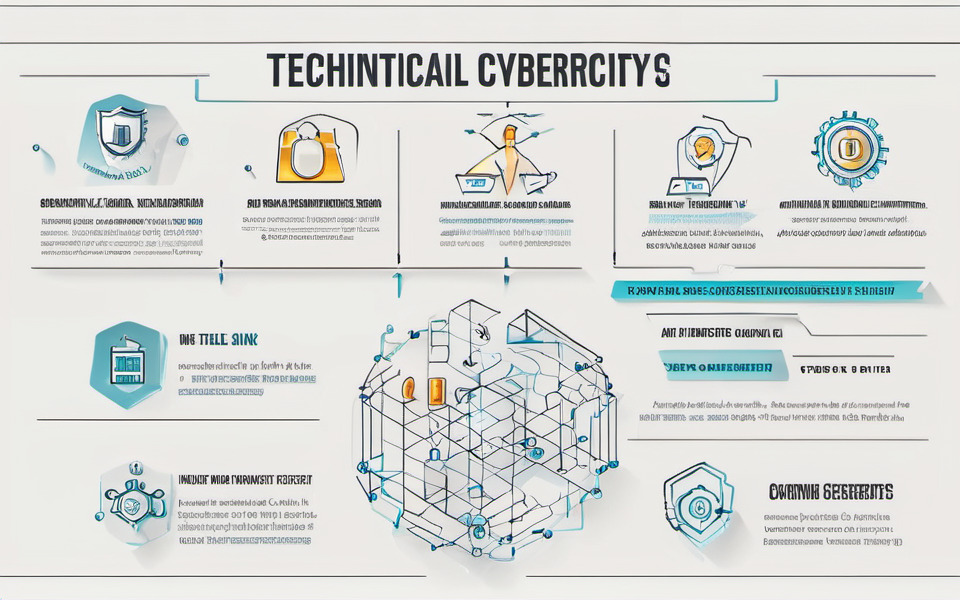Brace Yourself! The Cybersecurity Landscape is Evolving Faster Than You Think. But Don’t Panic – Experts Are Ready.
The digital world is buzzing with exciting opportunities, but lurking beneath the surface is a growing danger: cybercrime. Every day, hackers are becoming more sophisticated, employing advanced tools and tactics to infiltrate systems and steal valuable data. Are you prepared? It’s not just about protecting your personal information; it’s about safeguarding your business, your reputation, and even national security.
But don’t despair! While the cybersecurity threat landscape seems overwhelming, the good news is that skilled cybersecurity professionals are constantly innovating and developing new strategies to keep us safe.
The Evolving Cybersecurity Threat: A Multifaceted Beast
The cybersecurity landscape is a dynamic battleground, and it’s changing rapidly. Hackers aren’t just targeting big corporations anymore; individuals, small businesses, and even critical infrastructure are vulnerable.
The Rise of New Attack Vectors:
- Ransomware Attacks: Hackers lock you out of your own systems and demand payment to restore access. These attacks are becoming more frequent and increasingly sophisticated.
- Social Engineering: Hackers use psychological manipulation to trick users into revealing sensitive information. This can be through phishing emails, malicious links, or impersonation scams.
- IoT Security Breaches: As more devices are connected to the internet, they become potential targets. The vulnerability of these devices is a growing concern for individuals and businesses alike.
The Impact of Emerging Technologies:
- Cloud Computing: While cloud-based services offer convenience, they also present unique security challenges. Hackers can exploit vulnerabilities in the cloud infrastructure or target data stored there.
- Artificial Intelligence (AI): While AI has the potential to boost cybersecurity, it can also be used by attackers to automate and refine their tactics. AI-powered phishing attacks, for instance, can be extremely convincing.
- The Metaverse: As the metaverse expands, security threats will follow. Attacks like avatar theft, virtual world scams, and identity theft are likely to become more common.
Fighting Back with Technical Expertise: A Multi-Layered Approach
Cybersecurity experts are fighting back with advanced tools and techniques, deploying a multi-layered approach to secure our digital world.
1. Detection and Prevention:
- Firewall Deployment: Firewalls act as a barrier between your network and the outside world, blocking unauthorized access.
- Antivirus Software: Detects and removes malicious software from your system. Regular updates are crucial to protect against the latest threats.
- Intrusion Detection Systems (IDS): Monitor network traffic and alert administrators to suspicious activities.
- Behavioral Analytics: Tracks user behavior to identify unusual activity that could signal an attack.
2. Response and Recovery:
- Incident Response Teams: These experts are trained to react quickly and efficiently in the event of a cyberattack. Their role is critical for minimizing damage and restoring systems.
- Data Backup and Recovery: Regular backups allow businesses to restore critical data in case of an attack.
- Disaster Recovery Planning: Develop plans for resuming business operations after a security breach.
3. Human Factors and Training:
- Security Awareness Training: Educate employees about common cyber threats and best practices to protect against them.
- Phishing Simulations: Simulate real-world phishing attacks to help users recognize and avoid them.
- Ethical Hacking: Engage trained hackers to test your system for vulnerabilities before malicious actors exploit them.
Investing in the Future of Cybersecurity:
Cybersecurity is no longer just an IT concern; it’s a strategic priority for individuals, businesses, and governments alike. This means:
- Investing in cybersecurity expertise: Businesses need to prioritize hiring skilled professionals, train existing staff, and partner with expert organizations.
- Promoting collaboration: Open communication and collaboration between different organizations and sectors are crucial to sharing intelligence and responding effectively to emerging threats.
- Encouraging research and development: The cybersecurity field needs continuous innovation and investment in research to stay ahead of the evolving threat landscape.
The battle against cybercrime is ongoing, but with the dedication and expertise of dedicated professionals, we can build a more secure digital future.
Key Takeaways
- The cybersecurity threat landscape is constantly evolving, with new threats emerging daily.
- Hackers are targeting individuals, small businesses, and critical infrastructure in addition to large corporations.
- Technical experts employ multi-layered approaches, combining detection, prevention, response, and recovery strategies to combat cybercrime.
- Human factors are crucial. Cybersecurity training, phishing simulations, and ethical hacking can help individuals and organizations avoid becoming victims.
- Investing in cybersecurity expertise, promoting collaboration, and encouraging research are essential for safeguarding our digital future.




